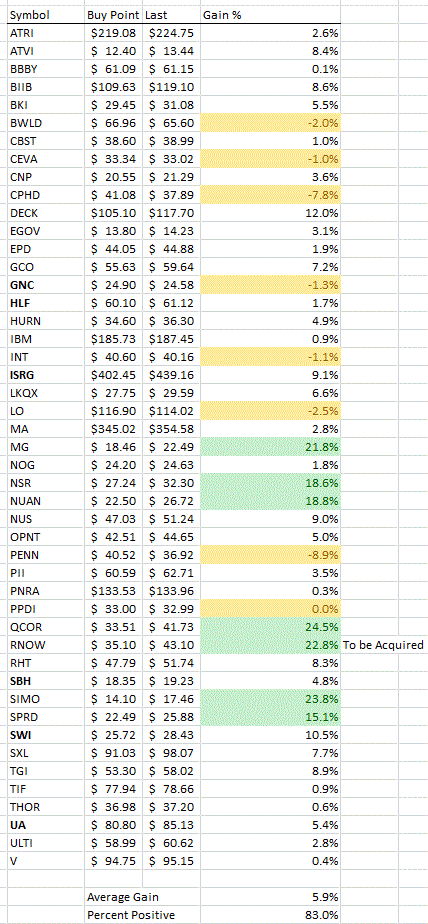
Originally Posted by
nickola.pazderic

Mike,
Your answer is certainly beyond the call of duty, and I'm humbled and cheered by it.
I hope I haven't been misunderstood, however. For as I noted in a previous post on EB's Forum:
EB--
..
Let me note: I think CAN SLIM is deceptively easy. In fact, I think it is the genius of O'Neil to make it look easy when it is not.
As I have also noted, I arrived at this site by way of O'Neil's book, IBD (indeed, I did subscribe to Market Smith), Morales/Kacher and HGSI. When I learned you are a forum leader, I recalled Kacher's warm and respectful reference to you in their book. So, please know I respect greatly your contributions and your willingness to share.
That said, perhaps my question is as idiotic as my approach to the market when it comes to the purchase of stock. Say, for example, I want to buy LULU because it shows pocket pivot signature volume and all fundamentals and market signs flash "BUY". In fact, say Morales and Kacher have sent an email informing their students that LULU is buyable. So, I turn to the intraday chart. I cannot decide when to buy it. The price is moving up or down or in consolidation intraday. It is above or below VWAP. Again, my response is perhaps moronic: I back off. Having bought and sold CAN SLIM leading stocks last fall, I realize that -- from my current perspective-- that on the intra-day scale I could have closed my eyes and simply pushed the buy button. Would this make a differece? Perhaps not. CAN SLIM is an intermediate term investment system. What does it matter if, due to my poor choice of intra-day buy points, I wake up the next day to a -3% position rather than a, say, -1% position? Perhaps it does. Because if the day after the market is down again and the stock falls 6-8% below my buy point, I may be forced to sell. Perhaps a more optimized intraday buy point would have kept me in the trade.
These concerns are based on my actual experience.
Many thanks always,





 Reply With Quote
Reply With Quote


